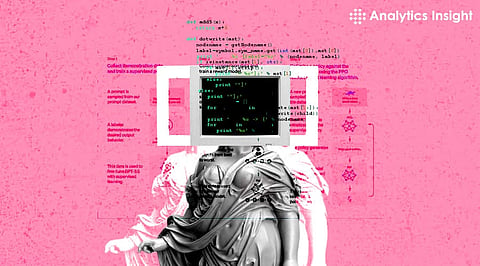

The robustness and versatility of R programming has made it stand as a powerful tool in the field of statistical computing and data analysis. R programming is widely known for its ability to handle large, complicated data sets and produce intelligent graphics. It also has an extensive collection of tools and packages that enable users to easily handle a wide range of tasks, from image processing and text mining to web scraping, GIS research, and even music analysis. Explore five surprising jobs that demonstrate the versatility and adaptability of R programming beyond its typical uses across multiple fields.
R has strong capabilities in image processing and visualization, but it is most known for its skills in statistical analysis and data visualization. Using packages such as 'imager' and 'EBImage,' R users can easily import, modify, and analyze photos for their needs. R's usefulness in this field is further increased by the ability to integrate with ggplot2 and other visualization packages to generate beautiful displays of image data.
The fields of text mining and natural language processing (NLP) are rapidly expanding, finding application in several industries. These include document clustering, sentiment analysis, text summarization, and topic modeling. R programming provides a rich ecosystem of packages, such as "tm," "quanteda," and "text2vec," that make text mining and natural language processing tasks simple. R offers strong tools and methods for analyzing unstructured text data, whether it is for feature extraction, text cleaning and preprocessing, or creating machine learning models for text classification. R's comprehensive documentation and user-friendly interface enable users of all skill levels to easily understand text mining and natural language processing.
For researchers, analysts, and data scientists, obtaining and collecting information from the web is an essential task in the era of big data. Utilizing programs like 'rvest,' 'httr,' and 'xml2,' users of R programming can easily scrape data from webpages, APIs, and other internet sources. R offers the tools and utilities required to retrieve and preprocess data from the web, whether it is for automating web interactions, extracting tables from HTML pages, or parsing XML or JSON data. Users may easily obtain insightful information from online sources and expedite data collecting procedures by utilizing R's web scraping capabilities.
In order to gain insightful knowledge about the world around us, geographic information systems (GIS) analysis include processing, analyzing, and visualizing geographical data. Although these tasks are typically performed with GIS programs like as ArcGIS and QGIS, R programming has a number of packages, such as'sf,' 'raster,' and 'leaflet,' that offer extensive GIS capabilities within the R environment. These packages enable users to easily do geoprocessing, map visualization, and spatial data analysis, utilizing R's statistical and visualization features to efficiently study spatial datasets. R's GIS features make it a flexible tool for spatial analytic tasks, whether researching spatial epidemiology, mapping population trends, or evaluating environmental data.
Unexpectedly, R programming may be utilized for audio processing and music analysis jobs with the help of packages like "seewave" and "tuneR." These programs provide up possibilities for activities like sound visualization, music classification, and audio feature extraction by allowing users to import, analyze, and work with audio data in a variety of formats. R offers the tools and methods required to successfully handle audio processing tasks, whether they include spectrum analysis of sound sources, pattern detection in musical compositions, or the development of machine learning models for audio identity. Researchers, musicians, and audio aficionados can explore and analyze audio data in novel ways by utilizing R's skills in this domain.
To sum up, R programming is a flexible and strong technology with many uses outside of its conventional uses in statistical computing and data analysis. R is a powerful tool that can handle a wide range of unexpected tasks with simplicity and efficiency, from image processing and text mining to web scraping, GIS analysis, and audio processing. Users can utilize R environment to address a wide range of problems in various fields by utilizing its extensive ecosystem of packages and libraries, which opens up new avenues for data analysis, research, and creativity.
Join our WhatsApp Channel to get the latest news, exclusives and videos on WhatsApp
_____________
Disclaimer: Analytics Insight does not provide financial advice or guidance. Also note that the cryptocurrencies mentioned/listed on the website could potentially be scams, i.e. designed to induce you to invest financial resources that may be lost forever and not be recoverable once investments are made. You are responsible for conducting your own research (DYOR) before making any investments. Read more here.
